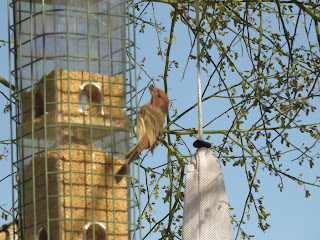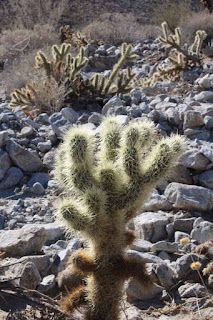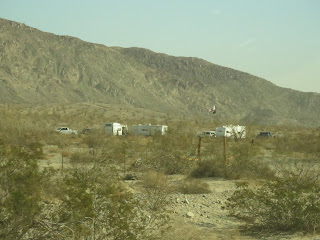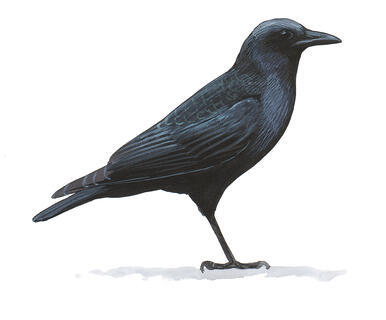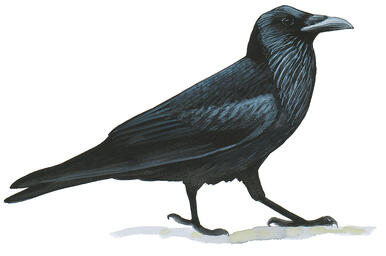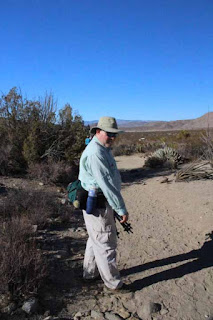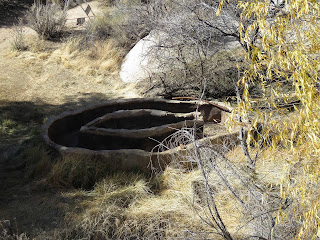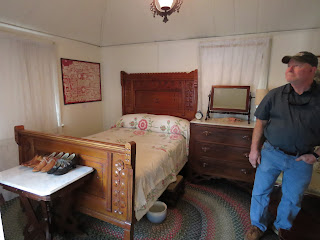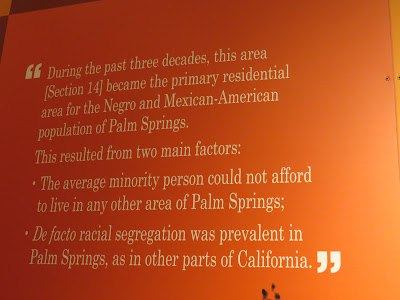NOTE: Best to view blog on computer, however, to view full blog on phone scroll to bottom of the blog and click on “View Web Version”. You can click on the Google Maps tab at the top and click on Year 5, Year 4, Year 3, Year 2 or Year 1 to see where we have been. You can click on the markers on the map to view the RV Parks we stayed at.
California - Chapter 4 - Borrego Springs & Lakeside
This is the final chapter of our 6-month journey through California.
Chapter 4 includes: Borrego Springs and Lakeside.
Mike grilled out during our stay and Sharon made a delicious Pear Dessert Recipe from the owner of our favorite B&B in St. Augustine, Florida.
The RV Resort hosted several events including Wine Tasting and Social Hour, Mexican Fiesta, Campfire Night, Hot Dog Roasting Night, Thanksgiving Potluck, Christmas Potluck and New Year’s Eve Party. Here we are at Mexican Night!
We also had fun with our new friends: Dennis and Gayle, our neighbors from Canada; Roger, Donna and Sofie from the Yukon; volunteers and one of the camp dogs!

Anza-Borrego Desert State Park
The Anza-Borrego Desert State Park’s rugged landscape formed largely by the forces of erosion attacking the uplifted mountains. The higher the mountains rise, the more vigorously they are attacked by rain, snow, ice, and wind, as they yield to the constant pull of gravity.
Borrego Palm Canyon Trail


Celeste explained to us about the desert pupfish in a pond at the beginning of the trailhead. The pupfish are unique in that they can tolerate water which fluctuates from near freezing to 108 degrees Fahrenheit, which ranges from fresh to as salty as the ocean. The pupfish is a remnant of the Ice Age, and the few species which survive today are found only in widely scattered, isolated water holes in deserts of the American West.


We stopped to rub the leaves of the desert lavender bush to release even more of the fragrance. Blooming from October through May, the rich floral scent attracts hundreds of bees that will pollinate its flowers.

The desert is also home to the California Gambel’s quail and the Costa’s hummingbird. The photo of the Costa's hummingbird taken by our friend Hal Cohen.

Peninsular Bighorn Sheep, uniquely adept at thriving in extreme, harsh conditions, is a true symbol of the California desert wilderness. The endangered mammal is the Park’s namesake (Borrego). The Anza-Borrego Desert State Park boasts a population of approximately 600 desert Bighorn scattered throughout its mountainous regions.
Loss of habitat and predation by mountain lions are two of the biggest problems facing this species right now. The Park is actively working to protect this animal and enhance its habitat.
Celeste told us that the sheep were known to come down from the rocky slopes to the local golf course to get water. One morning we found the spot and lay in wait in hopes of seeing the sheep. We got lucky on this day!
Our Park naturalist explained about the desert cacti, Ocotillo, Honey Mesquite, Creosote Bush, Saltbush, Desert Mistletoe, Desert Agave, Tamarisk trees, Salt Cedar, and other desert shrubs. Specimens included the barrel cactus, beavertail cactus, hedgehog cactus, all with different colors of spines. It was a 1.6-mile round trip hike with on a rocky trail with some hills with beautiful vistas of the desert landscape.

Sharon especially liked the Cholla Cactus because of how the sun backlights the spines. Along the hike Sharon discovered the skull of an animal on a tree branch, and later the entire skeleton of what we thought was a coyote or dog. It was an informative hike.

While we were in town we shopped at the one-of-a-kind boutiques and shops and ate at great restaurants from casual bar food, to savory Mexican food to five-star dining sophisticated continental cuisine!

We also stopped in at the Borrego Art Institute and walked through the gallery. It is a non-profit organization with the goal to inspire and enrich the community of Borrego Springs. It is also a venue for shows, classes, and is a community resource and gathering place. Sharon entered a photo contest while we were in Borrego Springs and was asked to submit some of them for review by judges.
It was interesting to hear the differences between crows and ravens. Crows caw while a raven will croak with variations. Crows can be found in the crowns of tall trees and the raven is found on rock ledges and crevices.


Crows are smaller and half the size of ravens. Because of the shape of their tails and how tight the feathers are, a raven is slower than a crow. A raven has a heavy beak compared to the pointed beak of a crow.

The raven is large and almost hawk-like whereas a crow is medium sized. The raven lives to 17 years old, but many live 25-30 years. A crow will live 12 years on the average. Crows are cannibalistic, while ravens will not eat their own.
 We attended a program with presenters Alan and Claudia Heller, authors of Curiosities of the California Desert. In this program they share their tales from the book. For years, curious sites across the California deserts have beckoned inquiring minds to discover historical and quirky places that pique the imagination.
We attended a program with presenters Alan and Claudia Heller, authors of Curiosities of the California Desert. In this program they share their tales from the book. For years, curious sites across the California deserts have beckoned inquiring minds to discover historical and quirky places that pique the imagination.
Blair Valley Hike
Indian women first hammered out a hollow in the rock surface. Then, over months and years of continued pounding, the hollows grew deeper. Some morteros extend a foot or more into solid rock. Course seeds and pods, like the mesquite bean, were pulverized in the grinding holes. After pounding the pods, the women would press the pulp into round cakes and dry them in the sun. Or, if the beans were still green, the moist pulp was put into a clay olla (jar) with water to make a sweet drink.
Kumeyaay people once used natural rock shelters for a number of purposes. They functioned as shelter, for food storage, or as sweathouses.
We also came across a pictograph. The Kumeyaay people used plants and minerals for paint. Red and black are the most common colors. Black paint was commonly made by grinding up charcoal and adding oil from roasted Wild Cucumber seeds. Red paint is most often made from iron oxide. Paintbrushes were made from Yucca and Agave fibers. Fingers and sticks were also used to apply the paints.


Cholla cactus are abundant in Smuggler Canyon near the pictograph site. A few Jumping Cholla Cactus hitched a ride on Mike along our hike! Cholla are a spiny lot and each spine is covered in backward pointing barbs, which makes removing them a painful experience. The individual stem segments of the plant are only weakly attached. The slightest touch will detach them. This gives the unfortunate hikers the idea that the plant has physically jumped out and attacked!
Joshua trees take many different forms. Sometimes they are full and bushy, other times spindly and open in their overall shape. Known as the park namesake, the Joshua tree is a member of the Agave family. The Joshua tree is a good indicator that you are in the Mohave Desert, but you may also find it growing next to a saguaro cactus in the Sonoran Desert in western Arizona or mixed with pines in the San Bernardino Mountains.
The tallest Joshua tree in the park looms a whopping forty feet high, a grand presence in the Queen Valley forest. Judging the age of a Joshua tree is challenging: these trees do not have growth rings like you find in an oak or pine. You can make a rough estimate based on height, as Joshua trees grow at rates of one-half inch to three inches per year. These are one of Sharon’s favorite trees to photograph.
It was a cold and windy day. We took a ranger-led hike on the Cap Rock nature trail to view boulder piles, Joshua trees, and other desert plants.

We hiked the Bark Dam Nature Trail. The dam was built by cowboys to water their cattle. The dam is a small, ephemeral lake that attracts an array of animal life in an otherwise parched environment.


We also took a ranger-led hike on the Wall Street Mill Trail to the Wall Street Mill, the finest example of a gold processing mill remaining in the park. A two-stamp mill, the building that covers it, the well that supplied it water, and the well pump all remain. During the Depression, the mining regions here experienced a second gold rush. As miners arrived, long-time rancher-miner Bill Keys recognized the need for a gold processing mill. In 1930 he bought the Wall Street Mill site, which had an existing well. Keys gathered the stamp mill and other machinery from area mine and mill sites to assemble his mill. For a fee, he processed ore for small-mine operators. When the gold was removed from the ore, it went back to the miner, to a smelter in Mojave, or to the U.S. Mint in San Francisco. Keys ran the mill on an as-needed basis, last using it in 1966.








This national park is a popular destination for seeing Joshua Trees and for boulder fields frequented by rock climbing enthusiasts from all over the world. We took a scenic drive to Keys View for breathtaking views of the San Andreas Fault, Mt. Jan Jacinto, Mt. San Gorgonio, and the Salton Sea. We stopped at Skull Rock, watched rock climbers, had a picnic lunch and enjoyed every minute of the day!

Numbering in the dozens, Breceda’s creative metal creatures appear almost natural in the desert landscape. Camels, sloths, llamas, wild horses, sabretooth tigers, mammoths, giant birds, wild pigs, sheep, and a dragon! We drove all over, got out of the Jeep and were in amazement at the life size sculptures. It was surreal.
Many of the sculptures are based on renditions in the book Fossil Treasures of the Anza-Borrego Desert. Breceda welds scrap reinforcement bars, wire and metal together and then adds life-like texture by pounding the materials with hammers. A couple of our favorites were the 1946 Willys Jeep, Giant Tortoise and the Miner panning for gold!
Farmer’s Market in La Quinta
Palm Springs
Palm Springs Art Museum
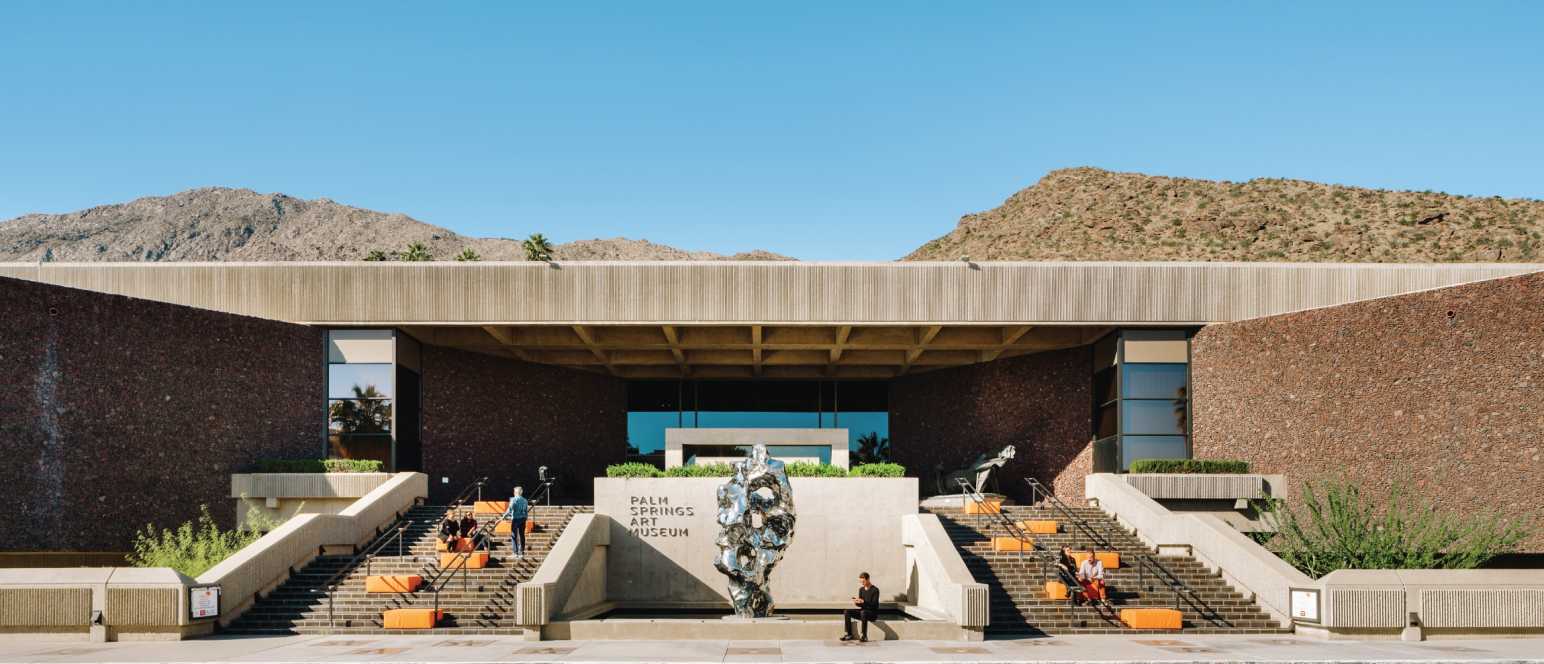

This life-size horse sculpture was made by Deborah Kay Butterfield, an American sculptor. She is known for her sculptures of horses made from found objects, like metal and especially pieces of wood. This was one of our favorite pieces.
We loved the couple sitting on the bench. They looked so real and reminded us of our friend's parents, Dick and Terry!



Just one block away from downtown Palm Springs with its busy restaurants, hotels, and shopping district, lives the other Palm Springs -- Section 14.
During the 1940s, Palm Springs' WWII military base and booming tourist industry drew minority workers and low-income families to the area. They found work at hotels, restaurants, and other businesses. Affordable housing was almost non-existent due to discrimination. As a result, individual Tribal Members began leasing out their lands on Section 14 to a diversity of people.
Ruddy’s 1930’s General Store Museum
Palm Springs Aerial Tramway
 We also took the Palm Springs Aerial Tramway to a breathtaking 8,516-foot elevation at the Mountain Station. It is the world’s largest rotating tram cars. The ride starts at the base, in the Sonoran Desert ecosystem, and ends at the top in an alpine forest. It is 30 degrees cooler at the top, so we dressed in layers. We enjoyed a fine California cuisine lunch at Peaks Restaurant and took in the breathtaking views!
We also took the Palm Springs Aerial Tramway to a breathtaking 8,516-foot elevation at the Mountain Station. It is the world’s largest rotating tram cars. The ride starts at the base, in the Sonoran Desert ecosystem, and ends at the top in an alpine forest. It is 30 degrees cooler at the top, so we dressed in layers. We enjoyed a fine California cuisine lunch at Peaks Restaurant and took in the breathtaking views!
Photo of a Wood Duck and Mallard by our weekly guide, Hal Cohen.
We kept in touch with Hal and his wife by sharing bird photos during our RV Adventure. One year we met up with them in Chicago where they live when not in Borrego Springs. They toured us all over the Chicago lakefront and we enjoyed lunch at one of their favorite spots!
Finally, Sharon's favorite bird, the Roadrunner!
Lecture: Home is Where the Hole Is: A Guide to Identifying Desert Burrows
 We attended a lecture with naturalist and author, Pinau Merlin. It was an interesting lecture by the author of The Field Guide to Desert Holes. She shared a peek into the secret lives of subterranean dwellers.
We attended a lecture with naturalist and author, Pinau Merlin. It was an interesting lecture by the author of The Field Guide to Desert Holes. She shared a peek into the secret lives of subterranean dwellers.
On our hikes we always notice all the holes in the ground and wondered what animal made it or if it was a snake hole. As Merlin explained, holes abound in the desert as animals seek refuge from climatic extremes and predators or hunt for food. We learned how to read holes and burrows to discern who made them and exactly which animals are living in the area. We learned why snakes don’t make their own burrows and why kit foxes are the only canid to live in dens year-round. And why does a packrat gather and build a huge mound of debris? We enjoyed the lecture so much that we bought her book and had it autographed!
Sharon Attends Beading and Felting Classes
On another day Sharon wanted to learn how to do felting. The owner of the yarn shop taught this class on how to make a felted purse. Sharon purchased a book on felting, picked out some yarns she liked, and purchased the needles and leather purse handles. Sharon had to learn how to knit and make the base of the purse which took the entire class time. What she did not learn was how to add more yarn, how to end it and how to finish the purse. Mike suggested we look for a book on how to knit and we found the perfect book. With step by step instructions Sharon learned how to complete her knitted purse. She then learned how to felt the purse in the washing machine! And finally, she went online to learn how to attach the leather handles. She also bought a tiny Singer sewing machine to make a lining. The purse turned out beautiful!
Crepuscular Walk in Anza-Borrego Desert State Park
At one point we meandered off the trail to track a black-tailed Jackrabbit that we caught a glimpse of. They are most active early in the morning and late in the evening. They eat shrubs, tree and flower sprouts and leaves, and even cactus on occasion.

The caves are not as well-known as some of the other points of interest in the park – they are not mentioned on the park’s web site or in its literature. But we found out about them through our naturalist friend, Celeste and her husband Wayne. We followed Ranger Don in his Jeep and stopped at various caves. The length of the caves varies, with some extending over 1,000 feet and featuring ceilings as high as 80 feet. Caves have been reported up to 35 feet wide, while others are so narrow that you must squeeze through openings like we did. Multi-level caves with skylights have been found, where erosion has created an opening, or sinkhole, in the ceiling of the cave. Some of the caves are easy to navigate, while others required you to crawl in sections.








The mud caves are formed by fluvial erosion caused during periods of heavy rainfall. When this infrequent rainfall occurs, it cuts channels into the mud hills that are commonly found in the Pseudokarst topography of this arid region. The channels cause erosion and form canyons with unstable and undercut walls. As the channels deepen, the walls cave in. Because of the cohesive consistency of the mud in this area and its ability to swell to several times its original dry volume, it adheres to itself and to the canyon walls, creating natural bridges and, sometimes caves, as it dries.
The lake is a perfect stop for migratory birds on the Pacific Flyway. Tens of thousands of birds arrive in October. The Sonny Bono Salton Sea National Wildlife Refuge was created to protect the wetland habitats used for over 400 species of birds. On our walk to the Salton Sea we discovered Gambel’s Quails, Kingfishers, White-Crowned Sparrows, and Swallow-tailed Kites.

We came upon the Salton Sea and walked along the shore taking notice of all the wading birds, including Black-necked Stilts, Great Blue Herons, Wood Storks, American Avocets, Marbled Godwits, Snow Geese, Northern Pintails, Canada Geese, White Pelicans, and Caspian terns.

Julian is rich in its historic treasures: home to the 1870 gold strike; once in the running for county seat; boasting the oldest continuously operating hotel in Southern California dating back to the 1890s; working mines; and apples extraordinaire! Julian is known for its apple pies!
We went into a gallery where Sharon admired a pair of sterling silver earrings hand-crafted by a local artist set with blue topaz stones. After strolling through town, Mike let Sharon shop while he took a walk. Unbeknownst to Sharon, Mike had walked back to the gallery and purchased those earrings and gave them to Sharon for Christmas! That’s love and what memories are made of!
Holiday Jazz Concert in San Diego

We were excited to continue our tradition from Florida. We always saw a jazz concert during the Christmas holiday. When we discovered that one of our favorite concerts “A Peter White Christmas” would be in San Diego, we had to get tickets! It also featured Mindi Abair on the saxophone and Rick Braun on the trumpet. Together they put on a great show!
Another day, we drove that dirt road again to see the sunset. We got there early enough to get a spot and set up Sharon’s tripod. We watch in awe as the sun set over the vast beauty of the desert. It was spectacular!
A mother and her two kids snuggling as the temperature began to drop.
Navigating the four mile road back in the dark!
Borrego’s Dark Sky
 Even though Mike doesn’t dance,
Even though Mike doesn’t dance,
we decided to buy tickets for
the New Year’s Eve Bash.
The RV Resort provided all
the food and a great band.
Sharon got her annual
slow dance with Mike!
We sat with friends
and toasted at midnight!
Lakeside – January 1, 2016 through March 1, 2016
The first week was catch up stuff, then we had major storms with flooding. At one point we thought we would have to pack up and leave. Mike asked the maintenance man if the river behind the RV ever came up over the bank! He said no, but he was keeping an eye on it.
Our neighbors, Duff and Eileen, were from Ontario, Canada. One day Duff came to the door and invited us to have cocktails with them later. Sharon was taking a nap and Mike was reading. With a knock on the door around 4:00, Duff asked if we were coming over! Cocktails at 4:00 must be Canadian time!! We enjoyed cocktails and snacks and before we knew it, it was dinner time! Duff and Eileen already had a plan. They made the best home-made macaroni and cheese that we had ever tasted! Sharon got the recipe and has made this dish many times since then!
The itinerary we set up for this area would be altered when Mike lifted, twisted and moved something very heavy in a confined space without Sharon’s help! Mike had hurt his lower back. Sharon looked on-line for a back surgeon, but she had called a neck surgeon by mistake. Luckily, they referred her to the best back surgeon in this area. After an appointment with the surgeon, Mike would need to have a spinal injection over the next few weeks before the surgeon would decide if he needed surgery.
Spanish Village consisted of quaint buildings and courtyards that were built in 1935 to depict an old village in Spain for the second California Pacific International Exposition. In 1937 the attraction reopened as an art center by a group of farsighted and dedicated artists. Sharon loved visiting all of the working artist studios, galleries and art guilds who host over 300 local painters, sculptors, metalsmiths, jewelry designers, clay artists, gourd artists, photographers, printmakers, fiber artists, basket makers, mixed-media artists, glass artists, enamel artists and many more!
On another day we drove to Santee Lakes, recreation preserve nestled in the rolling hills of San Diego’s East County. It had seven scenic lakes that provided boating and fishing. We came to see the RV campground and look at some sites we might want to stay at in the future. While we drove around the park, we saw a couple walking an animal! What kind you ask! They were walking a pig on a leash! Sharon asked Mike to stop so she could take a photo! She asked the couple whose idea was it to get a pig? The man smiled and pointed to his wife! We would consider this park, if our neighbors didn’t have a pig!!
After a few weeks, Mike met with the surgeon. He was still having excruciating pain that radiated down his thigh. The surgeon ordered an MRI and determined he would need surgery to remove a portion of his vertebrae to relieve the nerve pain. Surgery was on February 3rd. It was an outpatient surgery and Mike would need some recovery time. To help pass the time, Sharon made him play checkers one night, but when she beat him, he didn’t want to play anymore!!
We signed up for a demonstration at the Wildlife Research Institute in Ramona. The Falconer demonstrated birds of prey including a Golden Eagle, Red-Tailed Hawk, Great Horned Owl, a beautiful Peregrine Falcon, and a Kestrel, the smallest falcons. It was a fun day, nothing strenuous!


As Mike felt better, we went back to Balboa Park and took a self-guided tour. It is nearly 1,200 acres and is larger than Central Park. Balboa Park was set aside as park land in 1868. Not much has happened to this rocky, sagebrush-covered land for over 25 years until an enterprising young woman named Kate Sessions moved to San Diego in the late 1800s. She was instrumental in landscaping the park, introducing exotic trees and flowering shrubs from countries with similar climates. She was also involved in landscaping for the two expositions held in Balboa Park. The Panama-California Exposition was organized to celebrate the completion of the Panama Canal in 1915. The Exposition was so successful, it was held a second year. Many buildings were still standing in July 1934, when civic leaders decided once again to host a world’s fair. Eight months later, the California Pacific International Exposition opened in Balboa Park. Over 7 million visitors attended by the time the fair closed in 1936.
Not only is Balboa Park the cultural heart of San Diego, but its history is integral to that of the city. What makes Balboa Park so special is its unique blend of cultural, horticultural and architectural features. It has been called the “Smithsonian of the West” because of the proximity to its 15 museums, and other cultural attractions. You need several days to tour the grounds and museums, but it is well worth it.
We took a trolley tour around downtown San Diego. We returned to the Trolley stop at Old Town where we found a great place for lunch. After lunch we shopped in the Old Town Market. Old Town San Diego is considered the “Birthplace” of California. San Diego became the first permanent Spanish settlement in California in 1769. Old Town State Historic Park was established to preserve the rich heritage that characterized San Diego during 1821 to 1872 period. The park includes a main plaza, exhibits, museums and living history demonstrations. We toured the exhibits in the Wells Fargo History Museum that included one of the famous 30 stagecoaches shipped to Wells Fargo in 1867.


We extended our stay from Feb. 15 to March 1 so Mike could recover from his back surgery. Our friends, Duff and Eileen would be leaving before us, so Sharon enlisted Duff’s help to put our bikes back on the Jeep since Mike couldn’t lift anything. They were a great help while Mike was laid up!!
John Muir
This is the final chapter of our 6-month journey through California.
Chapter 4 includes: Borrego Springs and Lakeside.
Borrego Springs - November 13, 2015 through January 1, 2016
We stayed at The Springs at Borrego RV Resort and Golf Course for the winter, from November 13, 2015 through January 1, 2016. Located in the heart of the Anza-Borrego Desert State Park it is RVing at its finest. Borrego Springs was one of our favorite places as there was so much to do!
Sharon put out the bird feeder, finch sock, and hummingbird feeders! We enjoyed watching all the birds, night Herons, and Road Runners in the park!
Mike grilled out during our stay and Sharon made a delicious Pear Dessert Recipe from the owner of our favorite B&B in St. Augustine, Florida.
The RV Resort hosted several events including Wine Tasting and Social Hour, Mexican Fiesta, Campfire Night, Hot Dog Roasting Night, Thanksgiving Potluck, Christmas Potluck and New Year’s Eve Party. Here we are at Mexican Night!
We also had fun with our new friends: Dennis and Gayle, our neighbors from Canada; Roger, Donna and Sofie from the Yukon; volunteers and one of the camp dogs!

Our first stop was at the Borrego Springs Visitor Center to get the lay of the land. We then joined the Anza-Borrego Desert Natural History Association (ABDNHA) and the Anza Borrego Foundation (ABF) to take advantage of various interpretive activities such as hikes, talks and lectures.
Anza-Borrego Desert State Park
Anza-Borrego Desert State Park’s name comes from pairing the name of famed Spanish explorer Juan Bautista de Anza, who crossed this desert in 1774, and the Spanish word for sheep (“borrego”) – referring to the region’s native bighorn sheep. It is the largest state park in western America and contains some of the most diverse desert landscape in the world. It stretches 60 miles from north to south, 30 miles from east to west, and contains 12 wilderness areas. Within the park’s 600,000 acres there are three county roads, one state highway, more than 500 miles of dirt roads, two dozen hiking trails, and a myriad of canyons beckoning us to seek a quiet place to hike and explore. We stopped at the park’s visitor center to gather information.
The Anza-Borrego Desert State Park’s rugged landscape formed largely by the forces of erosion attacking the uplifted mountains. The higher the mountains rise, the more vigorously they are attacked by rain, snow, ice, and wind, as they yield to the constant pull of gravity.
Borrego Palm Canyon Trail
Our first hike was on the Borrego Palm Canyon trail with Celeste Doughty, an ABF member and volunteer naturalist. The rocky trail was three miles round-trip and took a minimum of two hours. The trail led to a cool, lush palm oasis which was a nice place to sit under the shade of the California Fan Palms and enjoy some time together to talk about our experience.


Celeste explained to us about the desert pupfish in a pond at the beginning of the trailhead. The pupfish are unique in that they can tolerate water which fluctuates from near freezing to 108 degrees Fahrenheit, which ranges from fresh to as salty as the ocean. The pupfish is a remnant of the Ice Age, and the few species which survive today are found only in widely scattered, isolated water holes in deserts of the American West.

All life in the desert revolves around water! We enjoyed the subtle beauty of this desert trek. It allowed us to stop while Celeste talked about how the plants get their water. The tall, spindly Ocotillo plant’s life revolves around rainstorms. After a rainfall, leaves will burst out within 24 hours. They’ll be full grown in only five days! Lack of water is not a problem for the beavertail and cholla cacti. When it rains, the cacti absorb moisture and store it for later use.
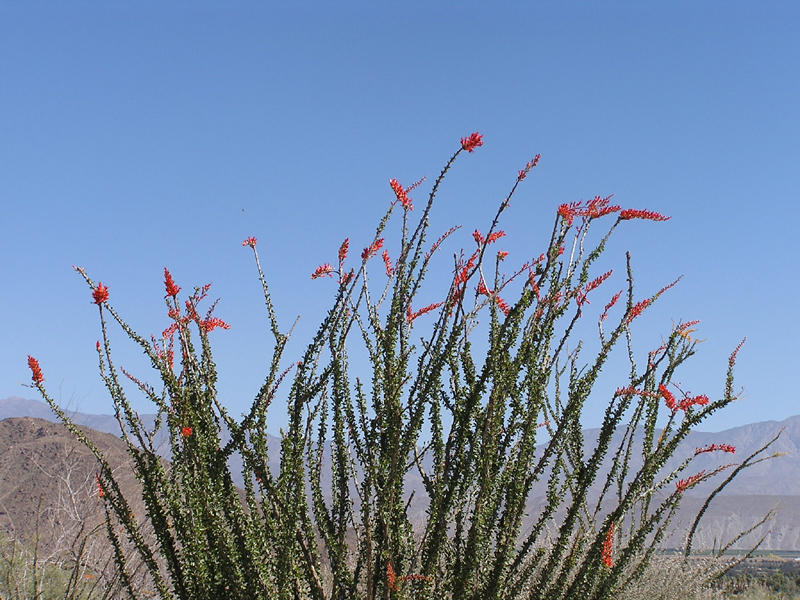


We stopped to rub the leaves of the desert lavender bush to release even more of the fragrance. Blooming from October through May, the rich floral scent attracts hundreds of bees that will pollinate its flowers.

Many of the holes in the ground are home to tarantulas, scorpions, lizards, and mice. One of the busiest underground residents is the harvester ant. On warm, sunny days, the ants march out to collect seeds from nearby wildflowers and bushes. They’re brought to the nest and hulled. Then the chaff is brought up and discarded, building a crater. Without these ant “gardeners,” the seeds would not get spread across the desert.
The desert is also home to the California Gambel’s quail and the Costa’s hummingbird. The photo of the Costa's hummingbird taken by our friend Hal Cohen.

Peninsular Bighorn Sheep, uniquely adept at thriving in extreme, harsh conditions, is a true symbol of the California desert wilderness. The endangered mammal is the Park’s namesake (Borrego). The Anza-Borrego Desert State Park boasts a population of approximately 600 desert Bighorn scattered throughout its mountainous regions.
Loss of habitat and predation by mountain lions are two of the biggest problems facing this species right now. The Park is actively working to protect this animal and enhance its habitat.
We learned about the Jam in the Park. It was held every Tuesday at the Gazebo at Christmas Circle in the center of Borrego Springs. We took our chairs and went to see what it was all about. Local musicians gather and jam. We attended every week. It was interesting to see the dynamics from week to week as the musicians took turns playing. The music was great. One day there was a husband and wife team who played their ukuleles and sang a few songs. We especially enjoyed a fabulous duet with a young local vocalist/guitarist and a woman who was retired flutist from the San Diego Symphony. They sang a fabulous rendition of Canned Heat – On the Road Again which is a song we always sing!
The next hike we took was the Yaqui Well nature trail leading to a hidden spring. Yaqui Well is a naturally occurring spring that has supported plant growth, wildlife, centuries of Kumeyaay people, pioneers, ranchers and travelers of all kinds.
Our Park naturalist explained about the desert cacti, Ocotillo, Honey Mesquite, Creosote Bush, Saltbush, Desert Mistletoe, Desert Agave, Tamarisk trees, Salt Cedar, and other desert shrubs. Specimens included the barrel cactus, beavertail cactus, hedgehog cactus, all with different colors of spines. It was a 1.6-mile round trip hike with on a rocky trail with some hills with beautiful vistas of the desert landscape.

Sharon especially liked the Cholla Cactus because of how the sun backlights the spines. Along the hike Sharon discovered the skull of an animal on a tree branch, and later the entire skeleton of what we thought was a coyote or dog. It was an informative hike.
This was a walk with a group of people led by a member of ABDNHA. This is when Sharon discovered she needed a new camera. Our friend Hal showed us a close-up photo of a bird taken with his camera. There was no comparison when Sharon looked at her photo of the same bird! Needless to say, Sharon eventually got her new camera!!
The village of Borrego Springs centers around a traffic circle named Christmas Circle. It is a town without a single stop light! We visited the Farmer’s Market which was held every Friday.

While we were in town we shopped at the one-of-a-kind boutiques and shops and ate at great restaurants from casual bar food, to savory Mexican food to five-star dining sophisticated continental cuisine!

We also stopped in at the Borrego Art Institute and walked through the gallery. It is a non-profit organization with the goal to inspire and enrich the community of Borrego Springs. It is also a venue for shows, classes, and is a community resource and gathering place. Sharon entered a photo contest while we were in Borrego Springs and was asked to submit some of them for review by judges.
There were so many talented photographers that Sharon could not compete. The winners would later be featured at a special exhibit at the Borrego Art Institute after we left! Here is a sampling of some amazing photographs that were entered in the contest by other photographers.
One thing we noticed as we drove around this desert area, Ocotillo Wells was home to action-packed terrain ideal for off-highway enthusiasts. With over 85,000 acres, the park offers various types of terrain – dirt roads and trails, sandy washes, narrow canyons, mudhills, rocky slopes, dunes and more. We were surprised at how many RV campers “boon-docked” anywhere along the road to enjoy their passion for speed and adventure!
We joined Volunteer Naturalist Jeff Salton to discover the remarkable differences between Crows and Ravens and explore some of the mystery and intrigue in the behavior of these two species in the Corvid family of birds.
Crow on left; Raven on right.
Crow on left; Raven on right.
It was interesting to hear the differences between crows and ravens. Crows caw while a raven will croak with variations. Crows can be found in the crowns of tall trees and the raven is found on rock ledges and crevices.


Crows are smaller and half the size of ravens. Because of the shape of their tails and how tight the feathers are, a raven is slower than a crow. A raven has a heavy beak compared to the pointed beak of a crow.

The raven is large and almost hawk-like whereas a crow is medium sized. The raven lives to 17 years old, but many live 25-30 years. A crow will live 12 years on the average. Crows are cannibalistic, while ravens will not eat their own.
There are some similarities that the raven and crow share. They are the most intelligent of the Corvid family of birds. Both demonstrate highly developed brains. The raven’s brain is more like bonobo primates and wolves. The crow’s brain is more like dolphins and elephants. They are both omnivorous and will eat almost anything. Sometimes they will each attend gatherings of other Corvids. Both mate for life.
Ravens have no natural predator, like to think about a problem before trying to solve it, are impatient, like to circle in the wind and glide and prefer to fly with a mate. A crow will fly with steady, rowing wingbeats, straight to its destination, likes to play games, has the shiniest feathers among all the Corvids, and often tries many solutions to solve a problem.
Ravens have no natural predator, like to think about a problem before trying to solve it, are impatient, like to circle in the wind and glide and prefer to fly with a mate. A crow will fly with steady, rowing wingbeats, straight to its destination, likes to play games, has the shiniest feathers among all the Corvids, and often tries many solutions to solve a problem.
California Curiosities Program
 We attended a program with presenters Alan and Claudia Heller, authors of Curiosities of the California Desert. In this program they share their tales from the book. For years, curious sites across the California deserts have beckoned inquiring minds to discover historical and quirky places that pique the imagination.
We attended a program with presenters Alan and Claudia Heller, authors of Curiosities of the California Desert. In this program they share their tales from the book. For years, curious sites across the California deserts have beckoned inquiring minds to discover historical and quirky places that pique the imagination.
On old Route 66, the desert traveler can find unusual roadside art and mementos left by motorists. In the El Paso Mountains of the Mojave, the daring adventurer can crawl through a tunnel that was hand dug by an old prospector named Burro Schmidt (we put this on our bucket list). In Landers, the weary wanderer can enjoy a rejuvenating “sound bath” in an acoustically perfect dome supposedly designed by aliens. Mike purchased their book and found it an interesting read and he added several of the sites to our list of things to see!
Blair Valley Hike
Blair Valley is situated between Granite Mountain and Whale Peak. We joined Volunteer Archaeologist and Naturalist Sam Webb to explore both rock art and historic milling features and to discover the hidden secrets of an ancient Kumeyaay Native American Village site. This 1.5 mile hike over uneven terrain began at the Ehmuu-Morteros trailhead in Blair Valley. Mortero is Spanish for mortar. The Kumeyaay word is èhmuu meaning “bedrock hole.” Morteros are an impressive collection of Indian grinding holes cut into large granitic boulders located at the base of a high ridge.
Indian women first hammered out a hollow in the rock surface. Then, over months and years of continued pounding, the hollows grew deeper. Some morteros extend a foot or more into solid rock. Course seeds and pods, like the mesquite bean, were pulverized in the grinding holes. After pounding the pods, the women would press the pulp into round cakes and dry them in the sun. Or, if the beans were still green, the moist pulp was put into a clay olla (jar) with water to make a sweet drink.
Kumeyaay people once used natural rock shelters for a number of purposes. They functioned as shelter, for food storage, or as sweathouses.
We also came across a pictograph. The Kumeyaay people used plants and minerals for paint. Red and black are the most common colors. Black paint was commonly made by grinding up charcoal and adding oil from roasted Wild Cucumber seeds. Red paint is most often made from iron oxide. Paintbrushes were made from Yucca and Agave fibers. Fingers and sticks were also used to apply the paints.


Cholla cactus are abundant in Smuggler Canyon near the pictograph site. A few Jumping Cholla Cactus hitched a ride on Mike along our hike! Cholla are a spiny lot and each spine is covered in backward pointing barbs, which makes removing them a painful experience. The individual stem segments of the plant are only weakly attached. The slightest touch will detach them. This gives the unfortunate hikers the idea that the plant has physically jumped out and attacked!
We have always wanted to visit the Joshua Tree National Park. President Franklin D. Roosevelt proclaimed Joshua Tree a National Monument in 1936. In 1994, Congress renamed the area Joshua Tree National Park. This park protects 794,000 acres – nearly three-quarters of it is designated wilderness – where the Mojave and Colorado deserts converge. A fascinating variety of plants and animals make their homes in a land sculpted by strong winds and occasional torrents of rain. Dark night skies, a rich cultural history, and surreal geologic features add to the wonder of this fast wilderness.
Joshua trees take many different forms. Sometimes they are full and bushy, other times spindly and open in their overall shape. Known as the park namesake, the Joshua tree is a member of the Agave family. The Joshua tree is a good indicator that you are in the Mohave Desert, but you may also find it growing next to a saguaro cactus in the Sonoran Desert in western Arizona or mixed with pines in the San Bernardino Mountains.
The tallest Joshua tree in the park looms a whopping forty feet high, a grand presence in the Queen Valley forest. Judging the age of a Joshua tree is challenging: these trees do not have growth rings like you find in an oak or pine. You can make a rough estimate based on height, as Joshua trees grow at rates of one-half inch to three inches per year. These are one of Sharon’s favorite trees to photograph.
It was a cold and windy day. We took a ranger-led hike on the Cap Rock nature trail to view boulder piles, Joshua trees, and other desert plants.



We also took a ranger-led hike on the Wall Street Mill Trail to the Wall Street Mill, the finest example of a gold processing mill remaining in the park. A two-stamp mill, the building that covers it, the well that supplied it water, and the well pump all remain. During the Depression, the mining regions here experienced a second gold rush. As miners arrived, long-time rancher-miner Bill Keys recognized the need for a gold processing mill. In 1930 he bought the Wall Street Mill site, which had an existing well. Keys gathered the stamp mill and other machinery from area mine and mill sites to assemble his mill. For a fee, he processed ore for small-mine operators. When the gold was removed from the ore, it went back to the miner, to a smelter in Mojave, or to the U.S. Mint in San Francisco. Keys ran the mill on an as-needed basis, last using it in 1966.








This national park is a popular destination for seeing Joshua Trees and for boulder fields frequented by rock climbing enthusiasts from all over the world. We took a scenic drive to Keys View for breathtaking views of the San Andreas Fault, Mt. Jan Jacinto, Mt. San Gorgonio, and the Salton Sea. We stopped at Skull Rock, watched rock climbers, had a picnic lunch and enjoyed every minute of the day!
This was a driving tour on the outskirts of town. It was something prehistoric. Something Mythical. Something out of the ordinary! It was the vision of town benefactor Dennis Avery located on Avery’s private parcel of land known as Galleta Meadows Estate. Here, in the middle of the desert was a magical menagerie of free-standing sculptures painstakingly crafted in metal by sculpture Ricardo Breceda of Temecula, California.

Numbering in the dozens, Breceda’s creative metal creatures appear almost natural in the desert landscape. Camels, sloths, llamas, wild horses, sabretooth tigers, mammoths, giant birds, wild pigs, sheep, and a dragon! We drove all over, got out of the Jeep and were in amazement at the life size sculptures. It was surreal.
Many of the sculptures are based on renditions in the book Fossil Treasures of the Anza-Borrego Desert. Breceda welds scrap reinforcement bars, wire and metal together and then adds life-like texture by pounding the materials with hammers. A couple of our favorites were the 1946 Willys Jeep, Giant Tortoise and the Miner panning for gold!
Farmer’s Market in La Quinta
We had to drive an hour and a half to get to the nearest shopping mecca. We drove to the Farmer’s Market in the quaint little town of La Quinta. We picked up some things we needed, dined, saw a movie, got a massage and went home to Borrego Springs!
Palm Springs
For nearly a century, Palm Springs has been the quintessential oasis for outdoor adventure, arts and culture, gaming and entertainment. It’s an irresistible collection of historic, retro and mid-century modern architectural treasures. Step back into the classic era of the Rat Packers, sipping exotic cocktails under the stars by grand-piano-shaped swimming pools. Lucille Ball and Desi Arnaz celebrated their wedding anniversary At Thunderbird Country Club in the 1950s. Presidents Eisenhower and Kennedy visited Palm Springs in 1962. Palm Springs has long been deemed California’s ultimate desert playground!
Palm Springs Art Museum
Today we went to the Palm Springs Art Museum and took a tour with the docent. It is one of the outstanding mid-size art museums in the country. The 150,000 square foot museum expanded its unique identity from an early emphasis on Western and Native American art to an extensive focus on international modern and contemporary art in all media, including architecture, studio glass, and photography. The museum’s collection included paintings by Marc Chagall, Pablo Picasso and Andy Warhol, glass sculptures by Dale Chihuly and photographs by Ansel Adams.


This life-size horse sculpture was made by Deborah Kay Butterfield, an American sculptor. She is known for her sculptures of horses made from found objects, like metal and especially pieces of wood. This was one of our favorite pieces.
We loved the couple sitting on the bench. They looked so real and reminded us of our friend's parents, Dick and Terry!
The Palm Springs Historical Society operates two of the oldest remaining buildings in Palm Springs. We toured through the McCallum Adobe was built in 1884 and was once the residence of the first white settler in Palm Springs. Today, it is home to historical exhibits of Palms Springs and a film about the City’s beginnings. The Adobe also showcases hundreds of historical photographs dating from the 1880s through the 1980s.
The Cornelia White House was built in 1893 and was once part of the first hotel in Palm Springs. The aptly named Palm Springs Hotel was later home to pioneer Cornelia White. It is now set up like a turn of the century Palm Springs residence.
Here we learned about the history and culture of the Agua Caliente Band of Cahuilla Indians, the earliest people of Palm Springs. Today’s exhibit featured Life on Section 14; the establishment of the Agua Caliente Reservation; and the destruction of Section 14. It was a compelling story of racial segregation.



Just one block away from downtown Palm Springs with its busy restaurants, hotels, and shopping district, lives the other Palm Springs -- Section 14.
During the 1940s, Palm Springs' WWII military base and booming tourist industry drew minority workers and low-income families to the area. They found work at hotels, restaurants, and other businesses. Affordable housing was almost non-existent due to discrimination. As a result, individual Tribal Members began leasing out their lands on Section 14 to a diversity of people.
In 1983 Jim Ruddy integrated his extensive 35-year collection of general store merchandise with a museum that he purchased in the Midwest. The museum had been the collection of a Depression-era liquidator who had kept his pick of the finest store fixtures and merchandise in his basement for 40 years. The result is one of the largest and most complete displays of unused general store merchandise in the country. It was interesting to experience all the treasures of the past such as hats, shoes, clothing, yard goods, sewing notions and hardware!
 We also took the Palm Springs Aerial Tramway to a breathtaking 8,516-foot elevation at the Mountain Station. It is the world’s largest rotating tram cars. The ride starts at the base, in the Sonoran Desert ecosystem, and ends at the top in an alpine forest. It is 30 degrees cooler at the top, so we dressed in layers. We enjoyed a fine California cuisine lunch at Peaks Restaurant and took in the breathtaking views!
We also took the Palm Springs Aerial Tramway to a breathtaking 8,516-foot elevation at the Mountain Station. It is the world’s largest rotating tram cars. The ride starts at the base, in the Sonoran Desert ecosystem, and ends at the top in an alpine forest. It is 30 degrees cooler at the top, so we dressed in layers. We enjoyed a fine California cuisine lunch at Peaks Restaurant and took in the breathtaking views!
During our ascent we passed through five unique life zones, from the Mexican Sonoran Desert to an Alpine wilderness. The Tramway transported us to Mt. San Jacinto State Park and Wilderness Area which encompasses 14,000-acres of pristine wilderness with lots of nature walks, hiking and camping. We could see for miles from the hundreds of windmills around Cathedral City, past Palm Springs and Desert Palms, all the way to the Salton Sea. The views were spectacular.
One of the hikes we took was with members of the Anza Borrego Foundation (ABF). The morning hike was led by member, Captain Dave. Today the blue sky with wispy clouds was a beautiful backdrop for a hike on the Palo Verde Wash. Captain Dave kept the hike lively when he stopped to give us some history of the wash and its desert plants.
We learned that every Wednesday, a winter resident named Hal led bird hikes through the RV Park. He knew his birds, and he especially liked hawks, hence his nickname “Raptor Hal.” Over the course of our stay, we a wide variety of birds including: the Snow Goose, Wood Duck, American Wigeon, Green-winged Teal, Ruddy Duck, Black-crowned Night-Heron, Swainson’s Hawk, American Kestrel, White-winged Dove, Anna’s and Costa’s Hummingbirds, Say’s Phoebe, Black Phoebe, Verdin, Cedar Waxwing, Phainopepla, Western Meadowlark and Lesser Goldfinch to name a few! It was a birder’s paradise!
We kept in touch with Hal and his wife by sharing bird photos during our RV Adventure. One year we met up with them in Chicago where they live when not in Borrego Springs. They toured us all over the Chicago lakefront and we enjoyed lunch at one of their favorite spots!
Finally, Sharon's favorite bird, the Roadrunner!
Lecture: Home is Where the Hole Is: A Guide to Identifying Desert Burrows
 We attended a lecture with naturalist and author, Pinau Merlin. It was an interesting lecture by the author of The Field Guide to Desert Holes. She shared a peek into the secret lives of subterranean dwellers.
We attended a lecture with naturalist and author, Pinau Merlin. It was an interesting lecture by the author of The Field Guide to Desert Holes. She shared a peek into the secret lives of subterranean dwellers. On our hikes we always notice all the holes in the ground and wondered what animal made it or if it was a snake hole. As Merlin explained, holes abound in the desert as animals seek refuge from climatic extremes and predators or hunt for food. We learned how to read holes and burrows to discern who made them and exactly which animals are living in the area. We learned why snakes don’t make their own burrows and why kit foxes are the only canid to live in dens year-round. And why does a packrat gather and build a huge mound of debris? We enjoyed the lecture so much that we bought her book and had it autographed!
Sharon Attends Beading and Felting Classes
There was never a lack of things to do in Borrego Springs. Sharon wanted to learn something new, so she found a local yarn shop that offered beading and felting classes. An instructor for the beading class came over from San Diego. Sharon used beads from her enormous collection and learned a new technique. The bracelet with gemstones and beads turned out amazing!
Crepuscular Walk in Anza-Borrego Desert State Park
One evening around dusk we joined Regina Reiter, a Park Interpretive Specialist and learned about nocturnal and diurnal creatures. As we walked along the trail, we explored the fascinating and surprisingly active hour between the day and the night.
At one point we meandered off the trail to track a black-tailed Jackrabbit that we caught a glimpse of. They are most active early in the morning and late in the evening. They eat shrubs, tree and flower sprouts and leaves, and even cactus on occasion.
We took another hike with Captain Dave and other members of the Anza Borrego Foundation (ABF) on Lute Ridge on the San Jacinto Fault. The desert at a glance is so much different than when you walk through it. You can appreciate its unique beauty when you view the desert up close at a slow pace. Our hikes in the desert reveal a fascinating variety of plants and animals, rocks sculpted by the weather and time contrasted with the brilliant blue of the desert sky.
One of the most fascinating points of interest in the Anza-Borrego Desert State Park is the system of caves known as the Arroyo Tapiado Mud Cave. Arroyo Tapiado, translated from Spanish, means “walled wash.” The mud caves are found along the walls of this wash canyon. One of the most extensive mud cave systems in the world, they contain approximately 22 known caves and 9 slot canyons.

The caves are not as well-known as some of the other points of interest in the park – they are not mentioned on the park’s web site or in its literature. But we found out about them through our naturalist friend, Celeste and her husband Wayne. We followed Ranger Don in his Jeep and stopped at various caves. The length of the caves varies, with some extending over 1,000 feet and featuring ceilings as high as 80 feet. Caves have been reported up to 35 feet wide, while others are so narrow that you must squeeze through openings like we did. Multi-level caves with skylights have been found, where erosion has created an opening, or sinkhole, in the ceiling of the cave. Some of the caves are easy to navigate, while others required you to crawl in sections.








The mud caves are formed by fluvial erosion caused during periods of heavy rainfall. When this infrequent rainfall occurs, it cuts channels into the mud hills that are commonly found in the Pseudokarst topography of this arid region. The channels cause erosion and form canyons with unstable and undercut walls. As the channels deepen, the walls cave in. Because of the cohesive consistency of the mud in this area and its ability to swell to several times its original dry volume, it adheres to itself and to the canyon walls, creating natural bridges and, sometimes caves, as it dries.
Sonny Bono Salton Sea National Wildlife Refuge
Today we drove over to the Sonny Bono Salton Sea National Wildlife Refuge. It is located along the course of the Pacific Flyway in the Imperial Valley of California. It was a beautiful sunny day!

Today we drove through the mountains to the historic mining town of Julian. It is often called the “best romantic get-away” in Southern California.

Julian is rich in its historic treasures: home to the 1870 gold strike; once in the running for county seat; boasting the oldest continuously operating hotel in Southern California dating back to the 1890s; working mines; and apples extraordinaire! Julian is known for its apple pies!
We went into a gallery where Sharon admired a pair of sterling silver earrings hand-crafted by a local artist set with blue topaz stones. After strolling through town, Mike let Sharon shop while he took a walk. Unbeknownst to Sharon, Mike had walked back to the gallery and purchased those earrings and gave them to Sharon for Christmas! That’s love and what memories are made of!
Holiday Jazz Concert in San Diego
We drove through the mountains to San Diego for dinner and a holiday jazz concert at the Historic Balboa Theatre. We made dinner reservations at the Searsucker Restaurant, in the Gaslamp District, which was absolutely divine! The Balboa Theatre is a historic vaudeville/movie theatre in downtown San Diego built in 1924 and is listed on the National Register of Historic Places. The theatre was refurbished and reopened as a performing arts venue in 2008. Its exterior is reminiscent of a Spanish mission, simple and unadorned, blending into its suburban surroundings.




At sunset and sunrise, the Borrego Badlands’ creased, and wrinkled ridges cast bold shadows across a maze of golden hills and sand-colored arroyos. One of the best places to see the Badlands is at Fonts Point, nicknamed California’s Grand Canyon. We took the four-wheel adventure in our Jeep -- four miles on a wide sandy dirt and rocky road. We woke up early and reached the top of the mountain in time to see the sunrise while shadows danced across the badlands. What a way to start the day!
Borrego Springs has been declared a Dark Sky Community by the International Dark Sky Association. Receiving the designation of Dark Sky Community is both prestigious and difficult to come by, having taken the Borrego Springs Dark Sky Coalition more than two years to qualify for this distinction. Here is a Dark Sky photo in Borrego Springs taken by Dennis Mammana. The photo features the Milky Way with the silhouettes of two of Ricardo Breceda’s sculptures in the foreground. During the 13 second exposure, a bright meteor shot across the sky and added even more drama to the scene.
Here are some photos from contestants of the Borrego Springs photo contest. Many times during our stay in Borrego Springs, we would look up at the starry night in awe! Sharon hasn't yet mastered how to capture the night sky!!

Mike’s Birthday

Mike’s Birthday
It was Mike’s birthday and we had reservations at a local restaurant that we liked – Assaggio Italian Restaurant.

After a delicious meal, we headed home for dessert. Sharon made Mike’s favorite – Pineapple Upside Down Cake!

After a delicious meal, we headed home for dessert. Sharon made Mike’s favorite – Pineapple Upside Down Cake!
We attended the RV Resorts’ Christmas Potluck. Everyone brought a covered dish and drinks. We sat with some of our RV friends and enjoyed the evening.
We had signed up to buy Christmas gifts for a family of five who lived in the community. Their wish list comprised of basic things like canned goods, a thermos for the father for work, clothes for the kids. Of course, we got what they wanted and then some. Sharon even baked her holiday zucchini bread to put in the basket with the canned goods. We have always enjoyed this part of Christmas!
New Year’s Eve Bash at RV Resort
New Year’s Eve Bash at RV Resort
 Even though Mike doesn’t dance,
Even though Mike doesn’t dance, we decided to buy tickets for
the New Year’s Eve Bash.
The RV Resort provided all
the food and a great band.
Sharon got her annual
slow dance with Mike!
We sat with friends
and toasted at midnight!
We left Borrego Springs on New Years Day for a drive through the mountains to Ranchos Los Coches RV Park in Lakeside. We stayed here from January 1, 2016 to March 1, 2016.
The first week was catch up stuff, then we had major storms with flooding. At one point we thought we would have to pack up and leave. Mike asked the maintenance man if the river behind the RV ever came up over the bank! He said no, but he was keeping an eye on it.
Our friends, Greg and Susie from Florida, saw the Rose Bowl Parade and then took a Norwegian Jewel Cruise to Puerto Vallarta, Cabo San Lucas and Mazatlan. On their way back, they flew into Los Angeles World Cruise Center in San Pedro. We wanted to spend the day with them, so we picked them up at the Cruise Center and took them to the Pacific Aquarium in Long Beach; had lunch at Bubba Gump and drove them to the airport to make their flight home! It was great to see our friends from home!
Our neighbors, Duff and Eileen, were from Ontario, Canada. One day Duff came to the door and invited us to have cocktails with them later. Sharon was taking a nap and Mike was reading. With a knock on the door around 4:00, Duff asked if we were coming over! Cocktails at 4:00 must be Canadian time!! We enjoyed cocktails and snacks and before we knew it, it was dinner time! Duff and Eileen already had a plan. They made the best home-made macaroni and cheese that we had ever tasted! Sharon got the recipe and has made this dish many times since then!
You can’t keep Mike down! The injection helped, so we continued our weekly lapidary classes that we had signed up for. They were held at the San Diego Gem and Mineral Society in Spanish Village. San Diego has a history of gem mining, going back to the first Spanish explorers. Starting in the 1800s and continuing to the present, the area would evolve into one of the premier locations in the United States, where a large variety of gemstones are mined, due to the rare and rich Pegmatite dikes that present in the area.
Spanish Village consisted of quaint buildings and courtyards that were built in 1935 to depict an old village in Spain for the second California Pacific International Exposition. In 1937 the attraction reopened as an art center by a group of farsighted and dedicated artists. Sharon loved visiting all of the working artist studios, galleries and art guilds who host over 300 local painters, sculptors, metalsmiths, jewelry designers, clay artists, gourd artists, photographers, printmakers, fiber artists, basket makers, mixed-media artists, glass artists, enamel artists and many more!
On another day we drove to Santee Lakes, recreation preserve nestled in the rolling hills of San Diego’s East County. It had seven scenic lakes that provided boating and fishing. We came to see the RV campground and look at some sites we might want to stay at in the future. While we drove around the park, we saw a couple walking an animal! What kind you ask! They were walking a pig on a leash! Sharon asked Mike to stop so she could take a photo! She asked the couple whose idea was it to get a pig? The man smiled and pointed to his wife! We would consider this park, if our neighbors didn’t have a pig!!
After a few weeks, Mike met with the surgeon. He was still having excruciating pain that radiated down his thigh. The surgeon ordered an MRI and determined he would need surgery to remove a portion of his vertebrae to relieve the nerve pain. Surgery was on February 3rd. It was an outpatient surgery and Mike would need some recovery time. To help pass the time, Sharon made him play checkers one night, but when she beat him, he didn’t want to play anymore!!
Needless-to-say, we didn’t do much for the next two weeks. One morning, Duff and Eileen made us breakfast with the sour dough pancake “starter” we gave to them.
We signed up for a demonstration at the Wildlife Research Institute in Ramona. The Falconer demonstrated birds of prey including a Golden Eagle, Red-Tailed Hawk, Great Horned Owl, a beautiful Peregrine Falcon, and a Kestrel, the smallest falcons. It was a fun day, nothing strenuous!


As Mike felt better, we went back to Balboa Park and took a self-guided tour. It is nearly 1,200 acres and is larger than Central Park. Balboa Park was set aside as park land in 1868. Not much has happened to this rocky, sagebrush-covered land for over 25 years until an enterprising young woman named Kate Sessions moved to San Diego in the late 1800s. She was instrumental in landscaping the park, introducing exotic trees and flowering shrubs from countries with similar climates. She was also involved in landscaping for the two expositions held in Balboa Park. The Panama-California Exposition was organized to celebrate the completion of the Panama Canal in 1915. The Exposition was so successful, it was held a second year. Many buildings were still standing in July 1934, when civic leaders decided once again to host a world’s fair. Eight months later, the California Pacific International Exposition opened in Balboa Park. Over 7 million visitors attended by the time the fair closed in 1936.
We took a trolley tour around downtown San Diego. We returned to the Trolley stop at Old Town where we found a great place for lunch. After lunch we shopped in the Old Town Market. Old Town San Diego is considered the “Birthplace” of California. San Diego became the first permanent Spanish settlement in California in 1769. Old Town State Historic Park was established to preserve the rich heritage that characterized San Diego during 1821 to 1872 period. The park includes a main plaza, exhibits, museums and living history demonstrations. We toured the exhibits in the Wells Fargo History Museum that included one of the famous 30 stagecoaches shipped to Wells Fargo in 1867.


We extended our stay from Feb. 15 to March 1 so Mike could recover from his back surgery. Our friends, Duff and Eileen would be leaving before us, so Sharon enlisted Duff’s help to put our bikes back on the Jeep since Mike couldn’t lift anything. They were a great help while Mike was laid up!!
This concludes Chapter 4, the last chapter of our first adventure through California. We explored so much and we hope you enjoyed the journey as much as we did!
Drop us an e-mail. We always enjoy hearing from you!
Mike & Sharon
“Between every two pines is a doorway to a new world.”









